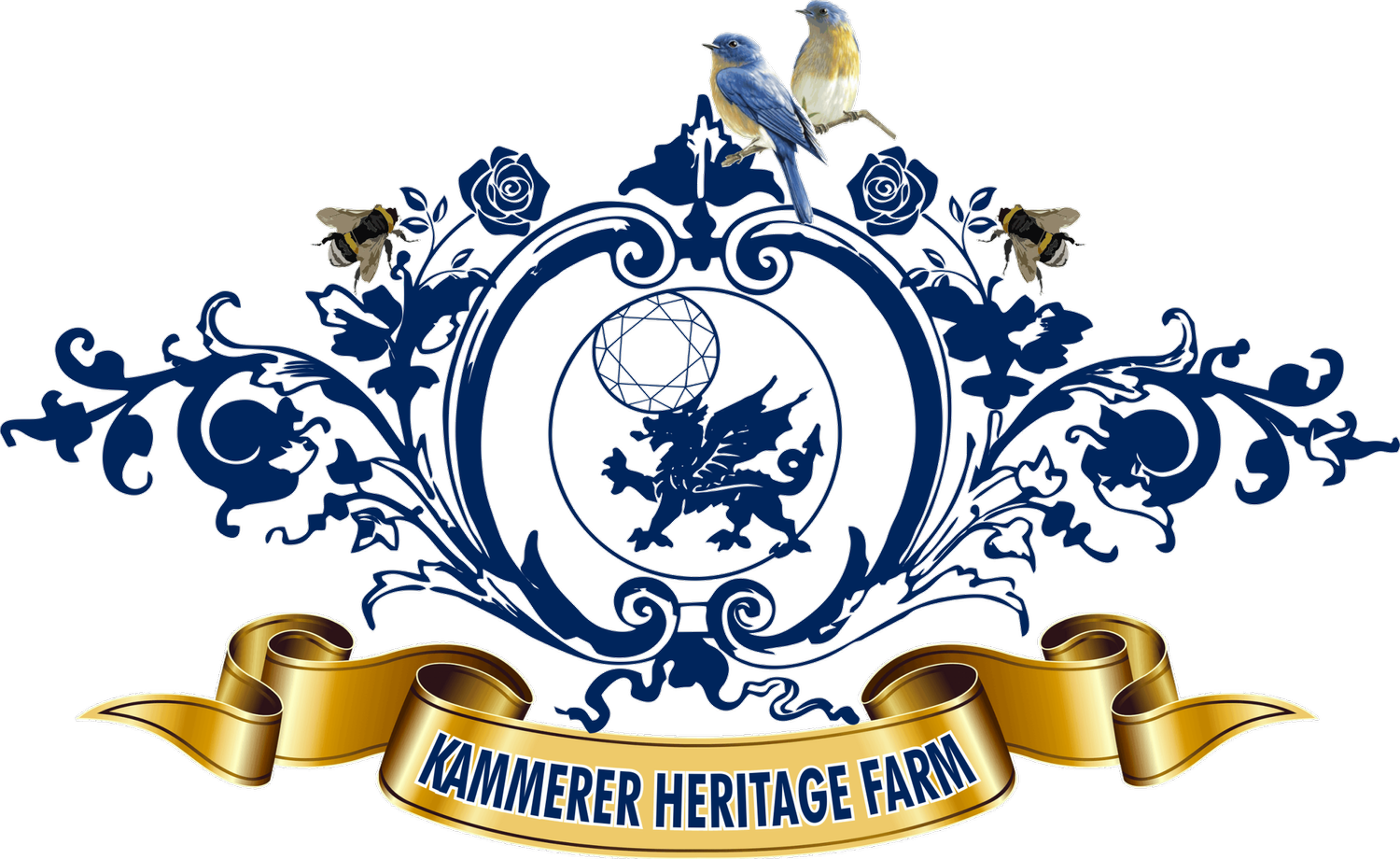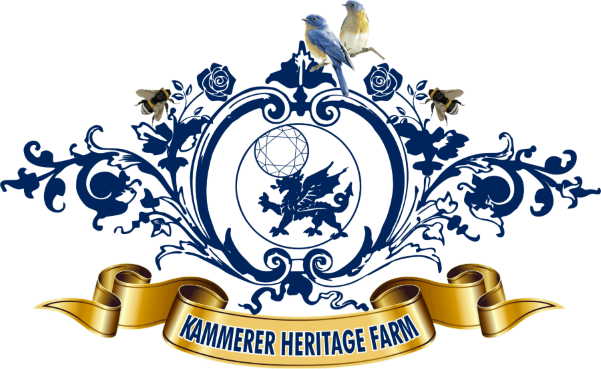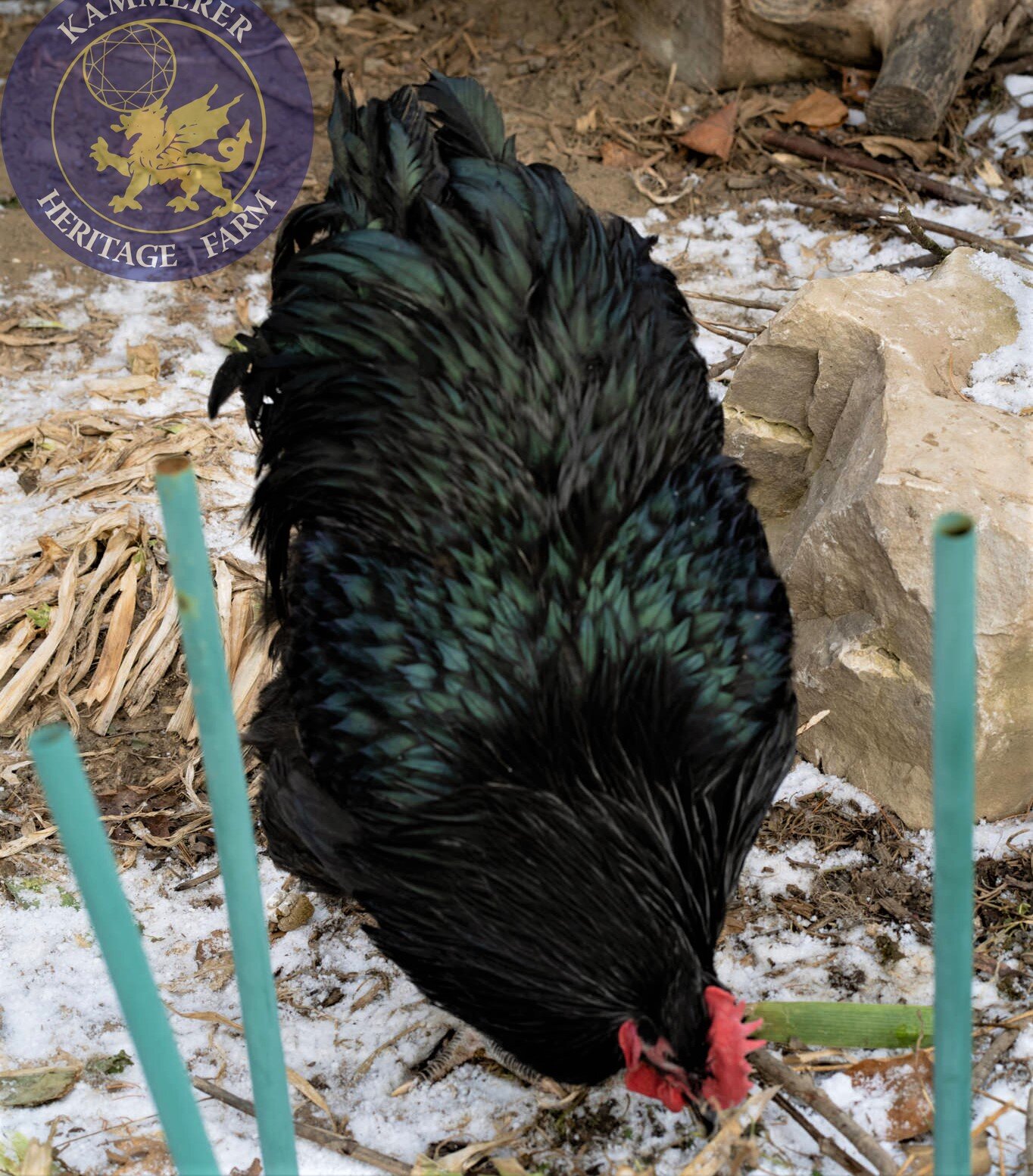 Image 1 of 6
Image 1 of 6

 Image 2 of 6
Image 2 of 6

 Image 3 of 6
Image 3 of 6

 Image 4 of 6
Image 4 of 6

 Image 5 of 6
Image 5 of 6

 Image 6 of 6
Image 6 of 6







Blue Orpington
The Blue Orpington was created much later in 1908 which was four years after William Cook the founder of Orpingtons had died. These were created crossing the original Black Orpington with white and were bred because they had greater egg laying potential due to the white birds used. Breeding the correct shade for the show standard is very difficult with blue because there is a tendency to drift back towards white[lighter] or black[darker] than the colour required. Orpingtons are bred as much for their looks and temperament as for their egg laying capabilities.
It was not wildly popular until the addition of Andalusian plumage genes which helped in the promotion of the breed. It is now a sought after variety The Males plumage has dark slate hackle, saddle, wingbow, back and tail. The rest of the lower body is light slate with dark lacing. The females plumage is all over medium slate with dark lacing and a dark slate neck. The beak, legs and eyes are all dark slate colour.
The Blue Orpington is one of the harder Orpingtons to breed to exhibition standard due to the complexity of the blue gene.
Heritage:
English
Egg Colour: Light Brown
Egg Count: 180-230 per year
Hens Body weight: 8-10 lbs
Rooster Body weight: 10-12.5 lbs
Temperament: Very Friendly
Hardiness: Docile, Quiet, and Affectionate, Canadian winter hardy after adulthood
Genetics:
Blue x Blue =25% male 25% Female Blue 25% black split 25% Blue Splash
Blue x Black Lavender split = 25% Blue Males 25% Blue Females 25% Black Lavender Split Male and 25% Black Lavender Split Females
Blue x Blue Splash = 25% Blue Male 25% Blue Female, 25% Blue Black Splash Male 25% Blue Black Splash Female
Black Lavender Split x Blue Black Splash = 50% Blue Male 50% Blue Female
Blue Black Splash x Blue Black Splash = 25% Blue Black Splash Male, 25% Blue Black Splash Female, 25% Blue Molted Male, 25% Blue Molted Female
The Blue Orpington was created much later in 1908 which was four years after William Cook the founder of Orpingtons had died. These were created crossing the original Black Orpington with white and were bred because they had greater egg laying potential due to the white birds used. Breeding the correct shade for the show standard is very difficult with blue because there is a tendency to drift back towards white[lighter] or black[darker] than the colour required. Orpingtons are bred as much for their looks and temperament as for their egg laying capabilities.
It was not wildly popular until the addition of Andalusian plumage genes which helped in the promotion of the breed. It is now a sought after variety The Males plumage has dark slate hackle, saddle, wingbow, back and tail. The rest of the lower body is light slate with dark lacing. The females plumage is all over medium slate with dark lacing and a dark slate neck. The beak, legs and eyes are all dark slate colour.
The Blue Orpington is one of the harder Orpingtons to breed to exhibition standard due to the complexity of the blue gene.
Heritage:
English
Egg Colour: Light Brown
Egg Count: 180-230 per year
Hens Body weight: 8-10 lbs
Rooster Body weight: 10-12.5 lbs
Temperament: Very Friendly
Hardiness: Docile, Quiet, and Affectionate, Canadian winter hardy after adulthood
Genetics:
Blue x Blue =25% male 25% Female Blue 25% black split 25% Blue Splash
Blue x Black Lavender split = 25% Blue Males 25% Blue Females 25% Black Lavender Split Male and 25% Black Lavender Split Females
Blue x Blue Splash = 25% Blue Male 25% Blue Female, 25% Blue Black Splash Male 25% Blue Black Splash Female
Black Lavender Split x Blue Black Splash = 50% Blue Male 50% Blue Female
Blue Black Splash x Blue Black Splash = 25% Blue Black Splash Male, 25% Blue Black Splash Female, 25% Blue Molted Male, 25% Blue Molted Female
The Blue Orpington was created much later in 1908 which was four years after William Cook the founder of Orpingtons had died. These were created crossing the original Black Orpington with white and were bred because they had greater egg laying potential due to the white birds used. Breeding the correct shade for the show standard is very difficult with blue because there is a tendency to drift back towards white[lighter] or black[darker] than the colour required. Orpingtons are bred as much for their looks and temperament as for their egg laying capabilities.
It was not wildly popular until the addition of Andalusian plumage genes which helped in the promotion of the breed. It is now a sought after variety The Males plumage has dark slate hackle, saddle, wingbow, back and tail. The rest of the lower body is light slate with dark lacing. The females plumage is all over medium slate with dark lacing and a dark slate neck. The beak, legs and eyes are all dark slate colour.
The Blue Orpington is one of the harder Orpingtons to breed to exhibition standard due to the complexity of the blue gene.
Heritage:
English
Egg Colour: Light Brown
Egg Count: 180-230 per year
Hens Body weight: 8-10 lbs
Rooster Body weight: 10-12.5 lbs
Temperament: Very Friendly
Hardiness: Docile, Quiet, and Affectionate, Canadian winter hardy after adulthood
Genetics:
Blue x Blue =25% male 25% Female Blue 25% black split 25% Blue Splash
Blue x Black Lavender split = 25% Blue Males 25% Blue Females 25% Black Lavender Split Male and 25% Black Lavender Split Females
Blue x Blue Splash = 25% Blue Male 25% Blue Female, 25% Blue Black Splash Male 25% Blue Black Splash Female
Black Lavender Split x Blue Black Splash = 50% Blue Male 50% Blue Female
Blue Black Splash x Blue Black Splash = 25% Blue Black Splash Male, 25% Blue Black Splash Female, 25% Blue Molted Male, 25% Blue Molted Female












